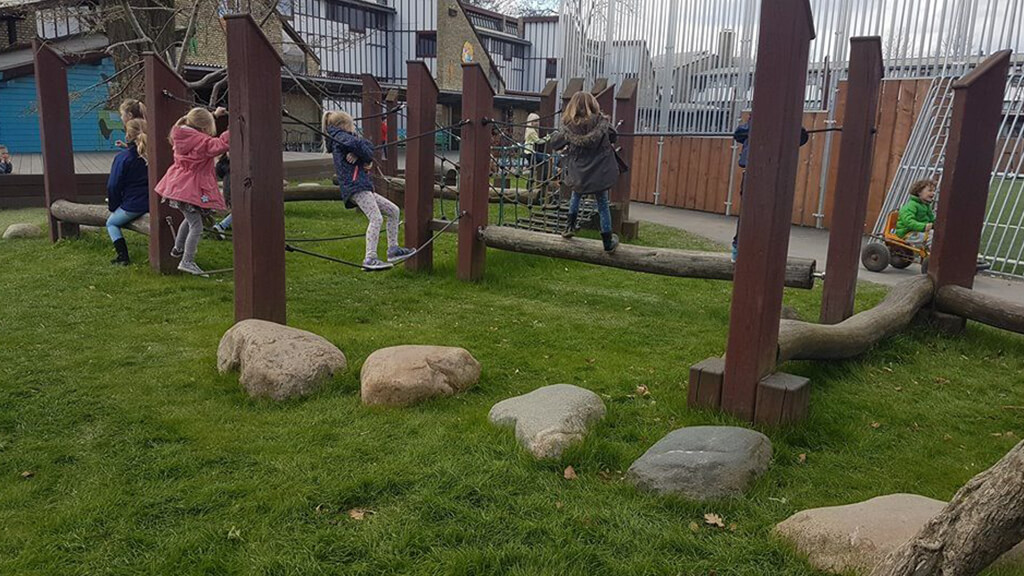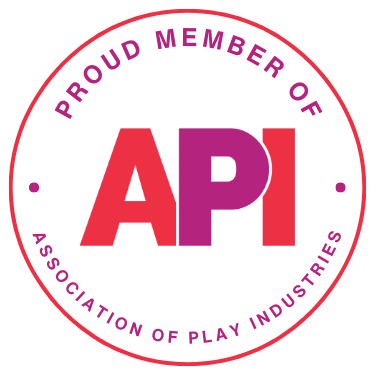Safety Surfaces to Keep Kids's Safe - Safe Play Experts
Safety is hugely important when picking safety surfaces; after all, we want everyone to be safe and not at risk of a big injury! Unfortunately as we all know, kids have a tendency to play very rough and tumble, so you may find yourself thinking: how do I know my safety surface provides the right level of protection against injury?
Our latest article will be explaining the safety measures that we put into place during the planning and installation of our safety surfaces, and will leave you with a clearer picture of the measures we take in order to ensure everyone’s protection.

Impact Absorption
You might be wondering how well a safety surface can absorb the impact of a child falling, slipping or tripping onto the ground. After all, we know that some surfaces are a harder hit than others, so it makes sense to want to know how well a playground surface can absorb impact. This can be determined through safety standard testing, which we’ll discuss later in the article.
Critical Fall Height
If you’re unfamiliar with this term, critical fall height (CFH) is the distance from the ground up to the highest point a child can reach or stand on. CFH helps ensure that each piece of equipment on a playground is correctly specified for its CFH measurement. PlaySmart advertise each of our product’s individual CFH measurements, so you know they’ll be suitable for you and your playground (which you can see by visiting our products).
What should I look for when ensuring the safety of a playground surface?
There are certain risk assessments and safety tests that are carried out on materials when determining their suitability for a playground. PlaySmart have worked closely with the same supplier for 21 years, ensuring a constant reliable and compliant product. You should ensure that the product is being tested according to the relevant standards.
What are the standards of playground safety surfaces?
The two most prominent playground surfacing standards are BS EN 1177 and BS 7188. BS EN 1177 specifies the testing equipment and impact testing methods used to determine the impact attenuation of a safety surface. BS 7188 provides tests as an extension onwards from BS EN 1277, such as resistance to wear and tear, slip resistance and so on. All PlaySmart products are tested according to these standards, so we can continue to provide the highest level of safety and reassurance for our clients.

Results from independent tests to BS EN 1177 (2018)
Product | Concrete base (laboratory test) | Grass base (field tests) |
EcoSmart only | 0.80m | 2.25m |
SmartPlay 25 & EcoSmart | 1.95m | 2.90m |
SmartPlay 45 & EcoSmart | 2.55m | >3.00m |
Results from independent tests to BS EN 1177 (2008)
Product | Concrete base (laboratory test) | Grass base (field tests) |
FireSmart only | 0.8m | 2.0m |
SmartPlay 25 & FireSmart | 1.5m | 2.6m |
SmartPlay 45 & FireSmart | 2.4m | 3.1m |
What can I do to make my playground safer?
Whilst PlaySmart take care of the boring safety stuff in production and testing, there are sometimes some small things you can do to ensure your playground remains safe and suitable for use. These include:
- Looking for and removing any loose hazards, like nails, wood splinters, bolt ends and so on
- Regularly inspect equipment for any damage or faults that could result in an accident or injury
- Making sure there are no trip hazards, such as rubbish or tree branches, and removing them if you see them
- Always supervising children playing
We know how important safety is, and we keep our standards high and testing rigorous in order to maintain our priorities – which always have our clients and their fun, safe playground experiences at heart. If you’ve got any more questions for us regarding our safety surfaces, our testing methods, or anything else we haven’t covered, don’t hesitate to fill out the contact form below and we’ll get back to you ASAP!


